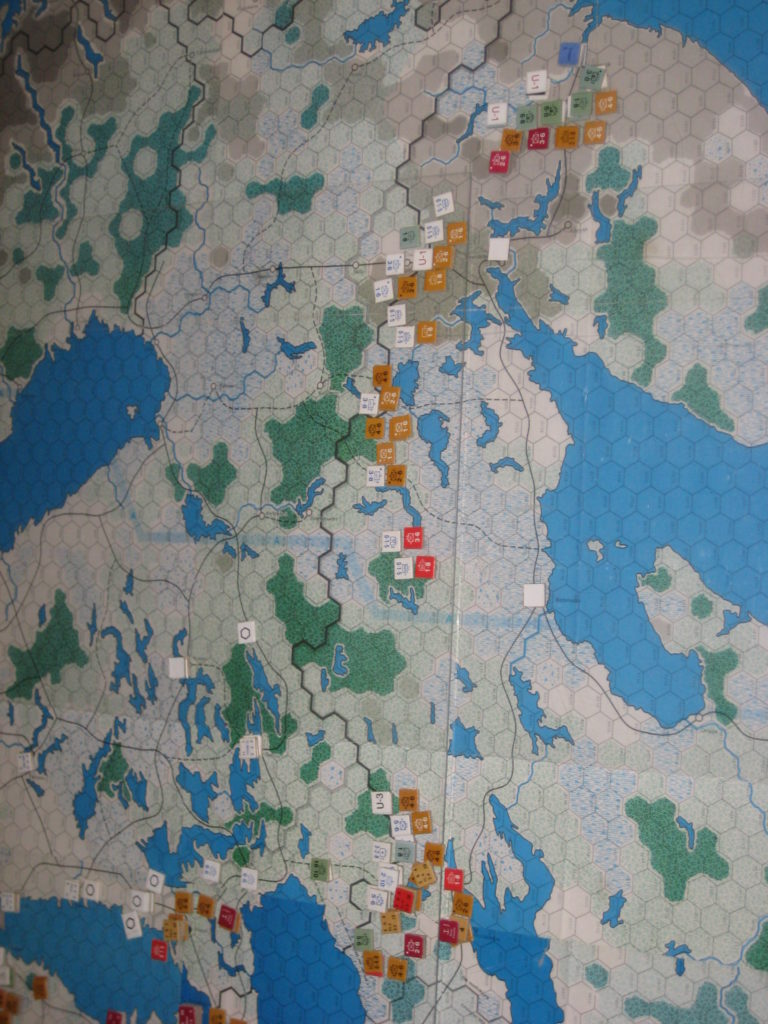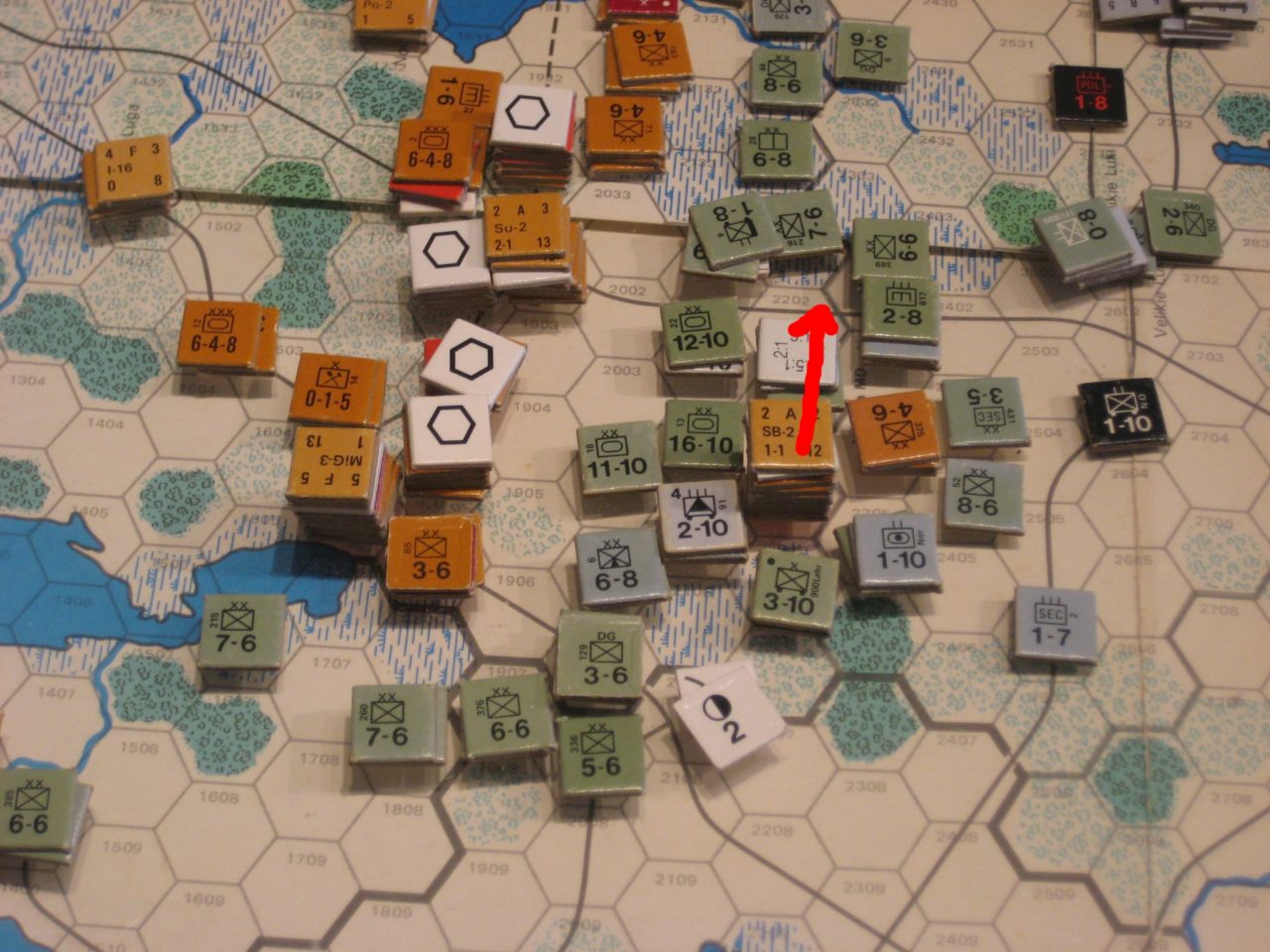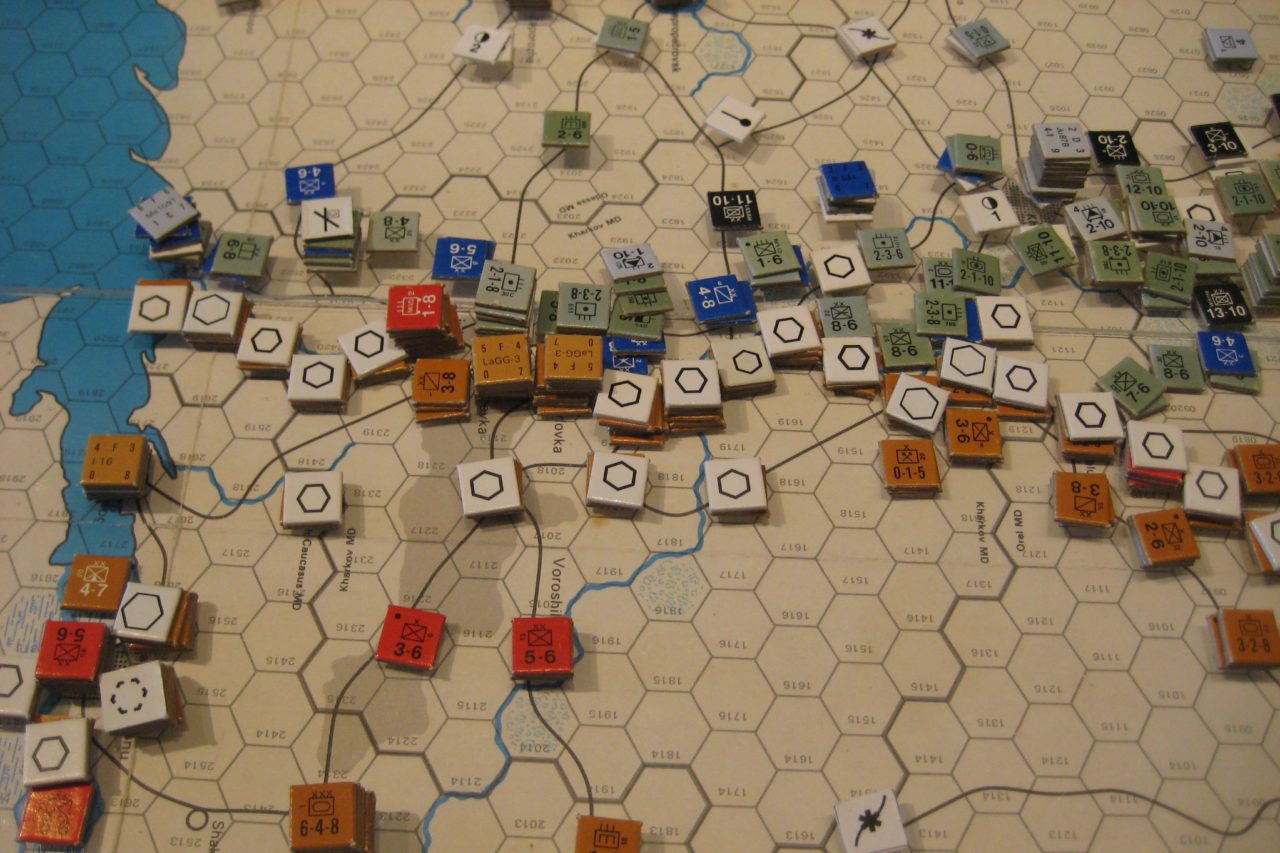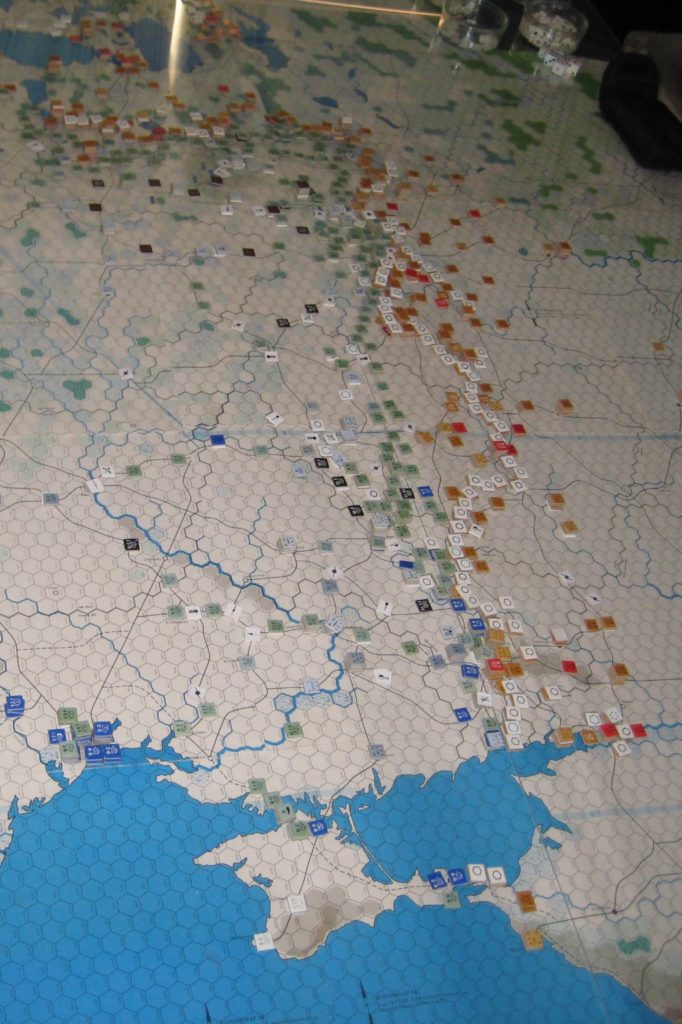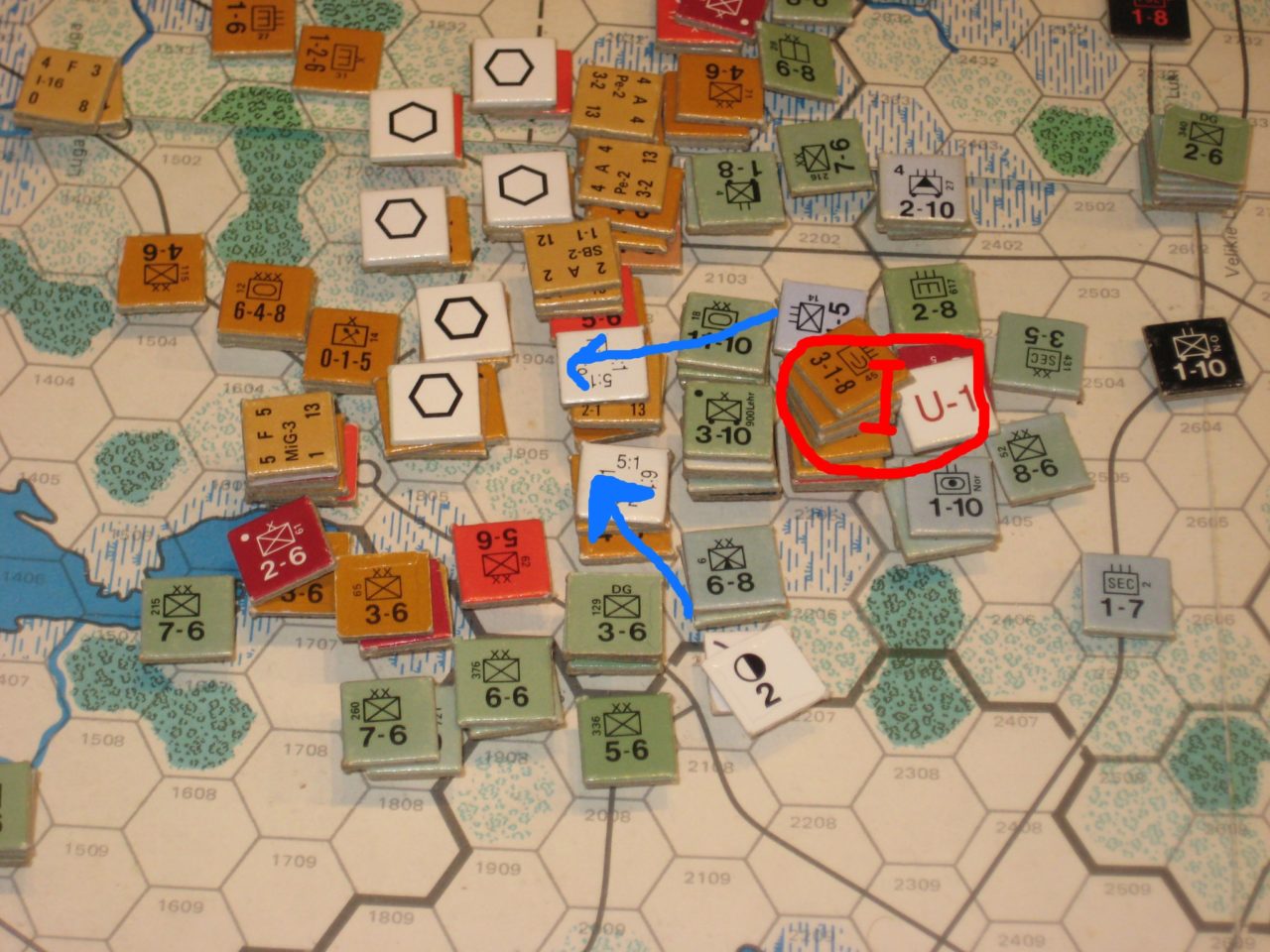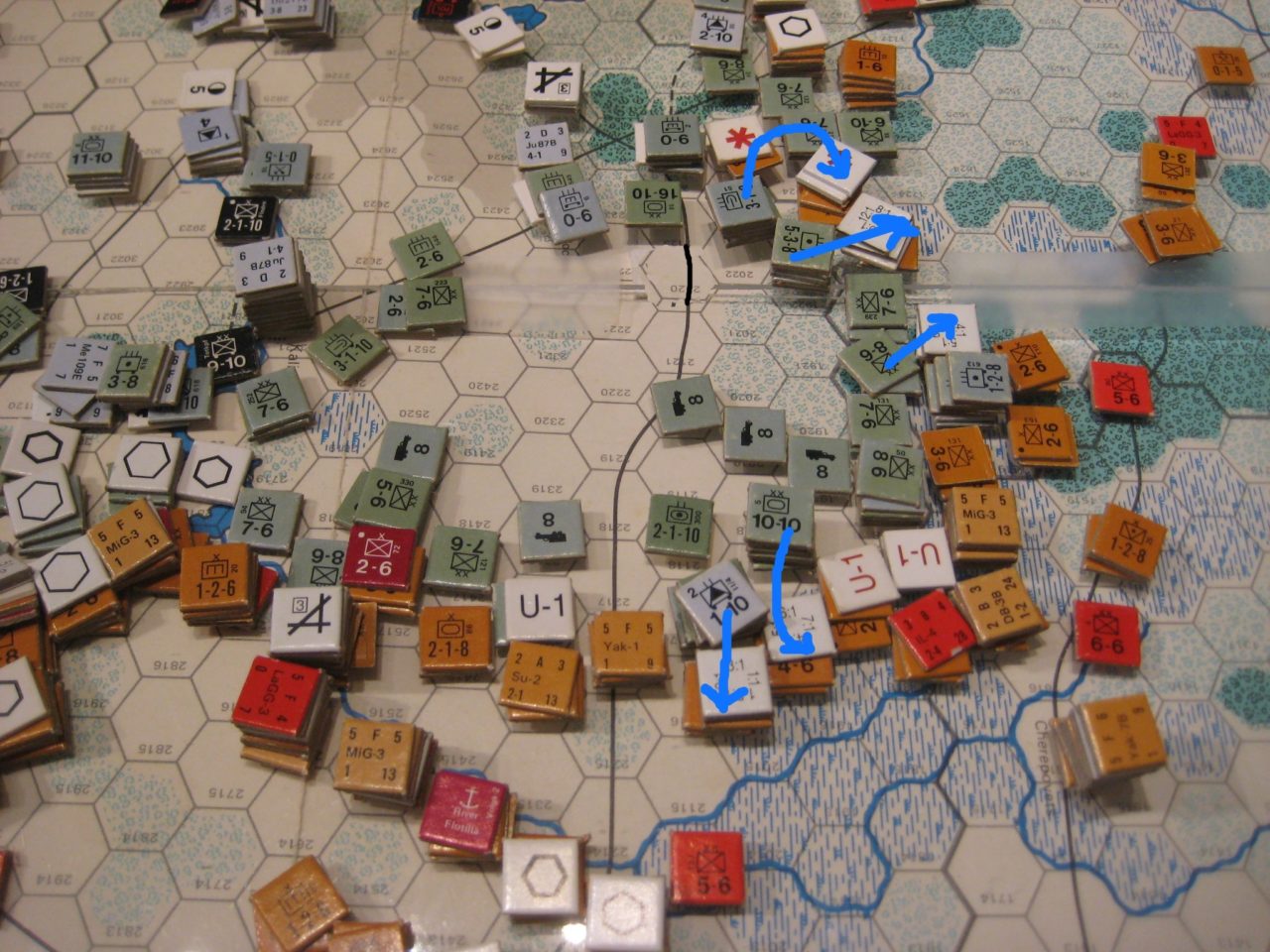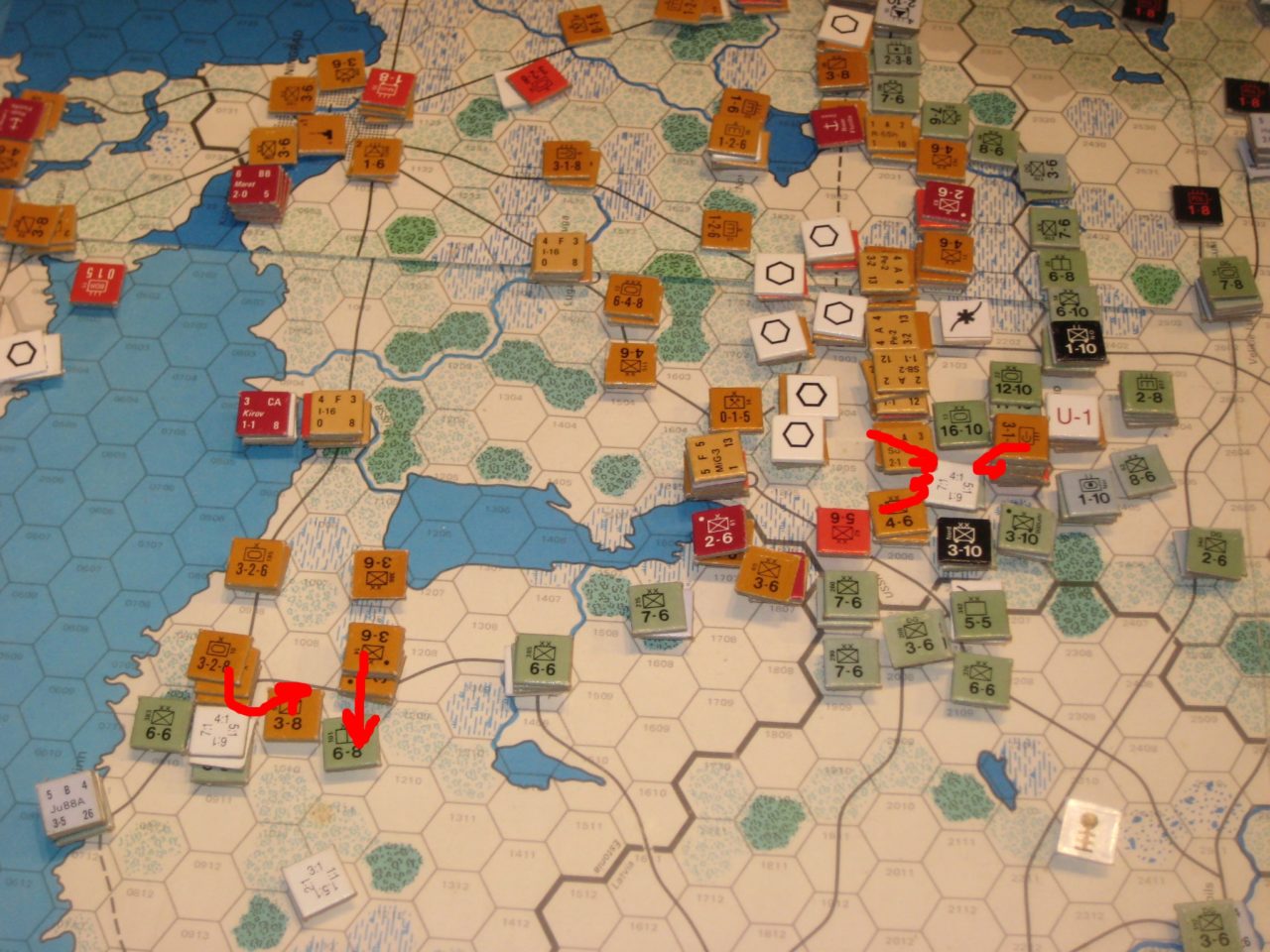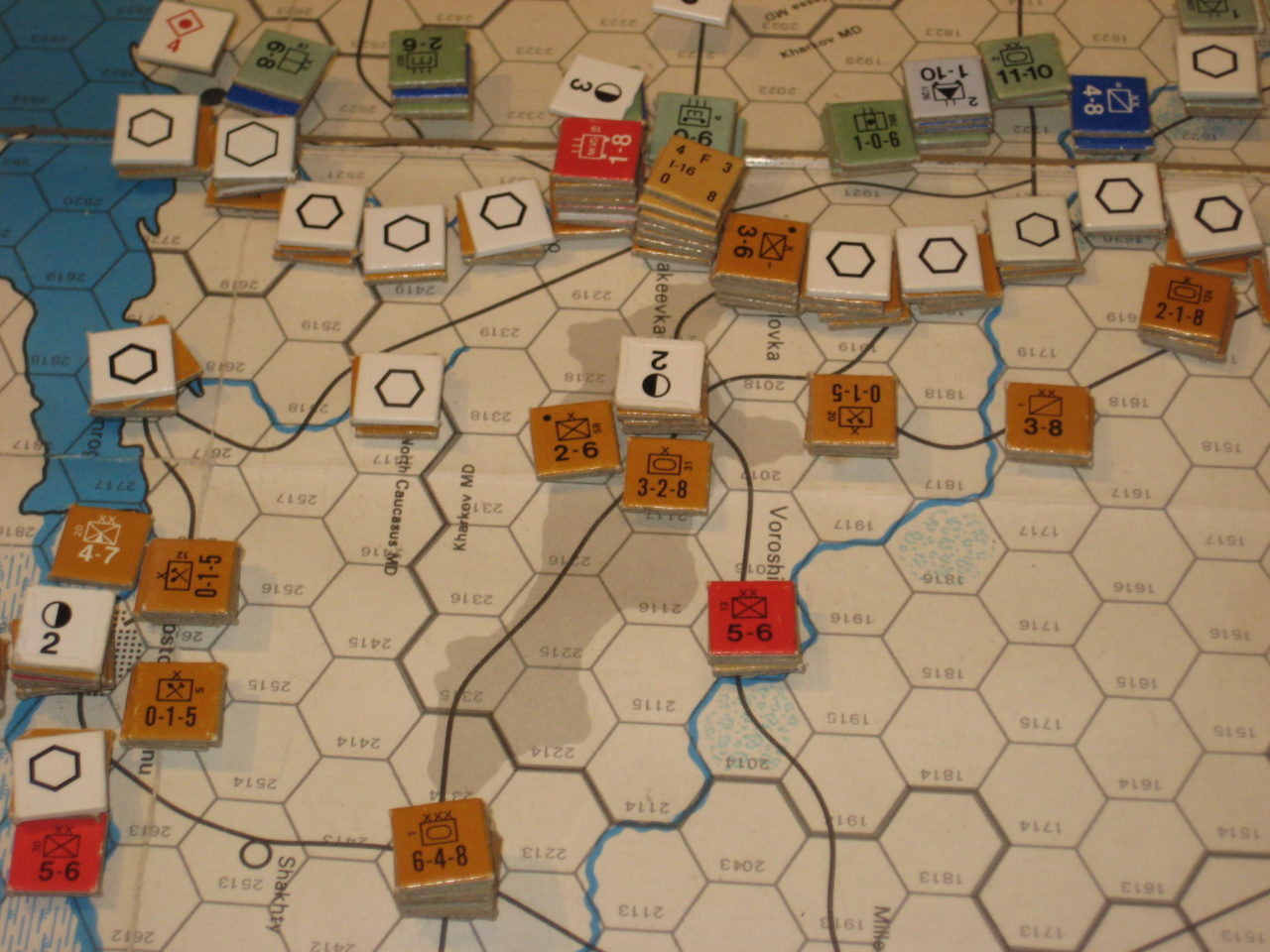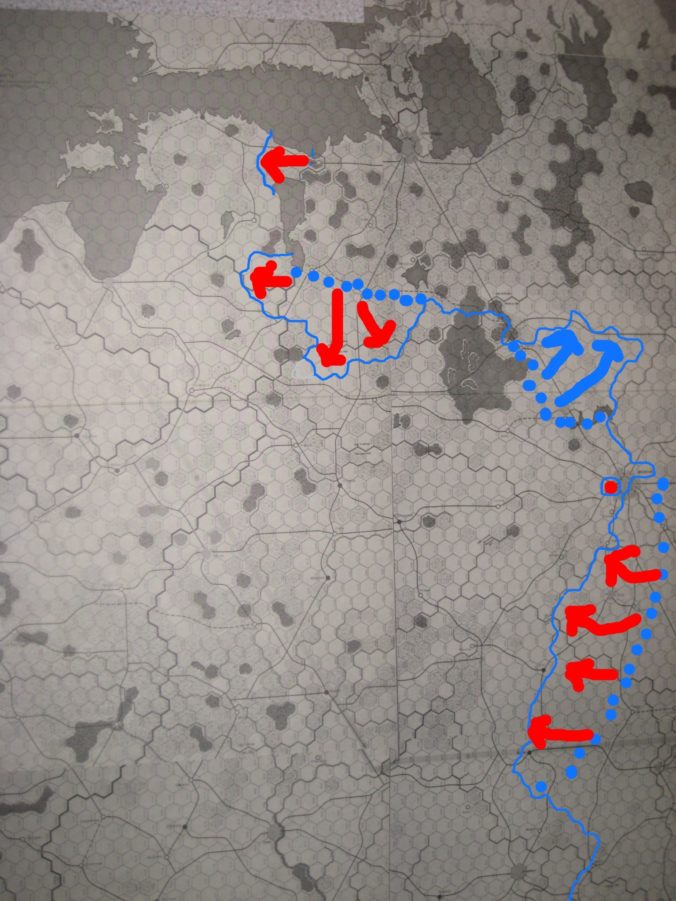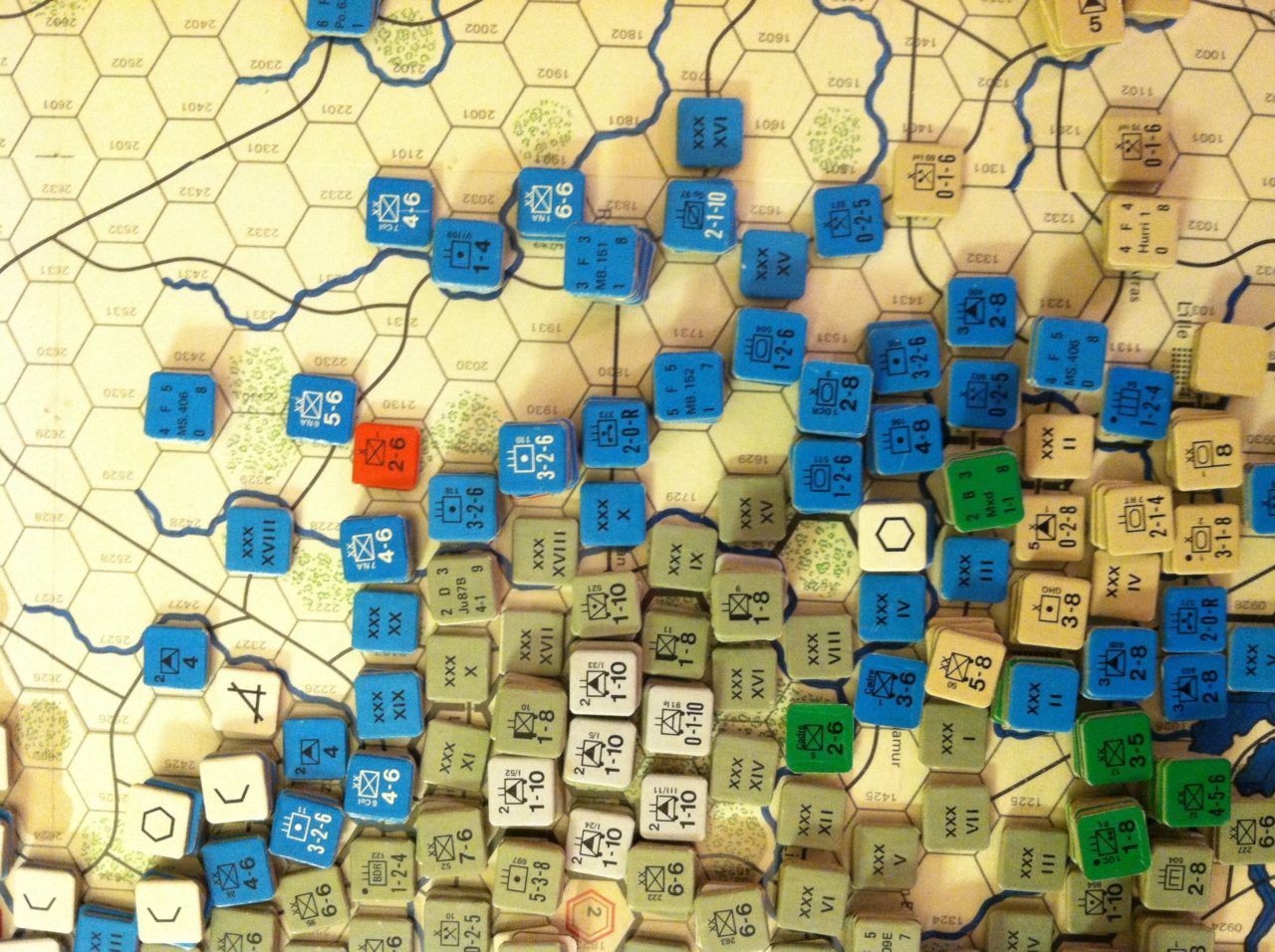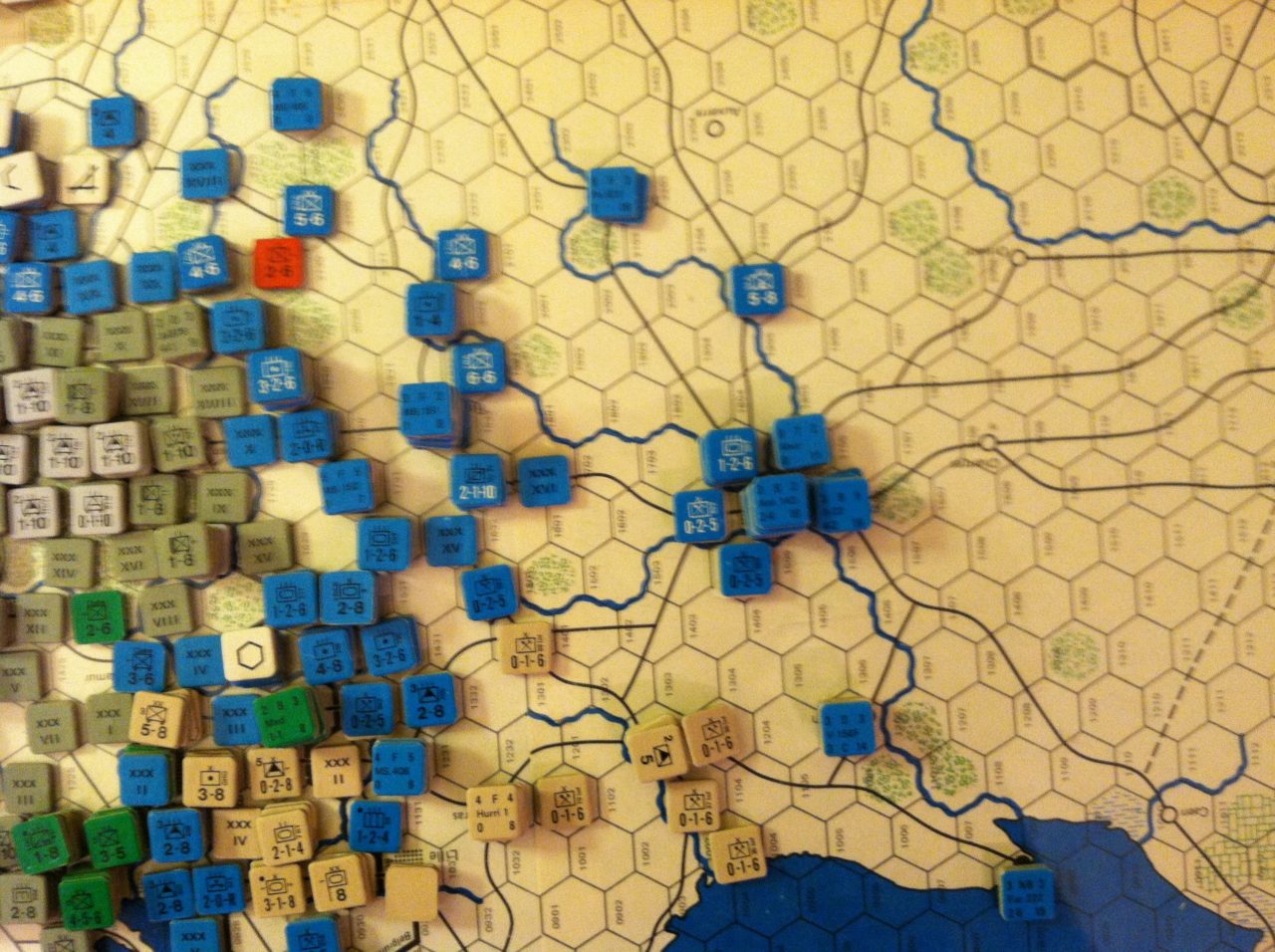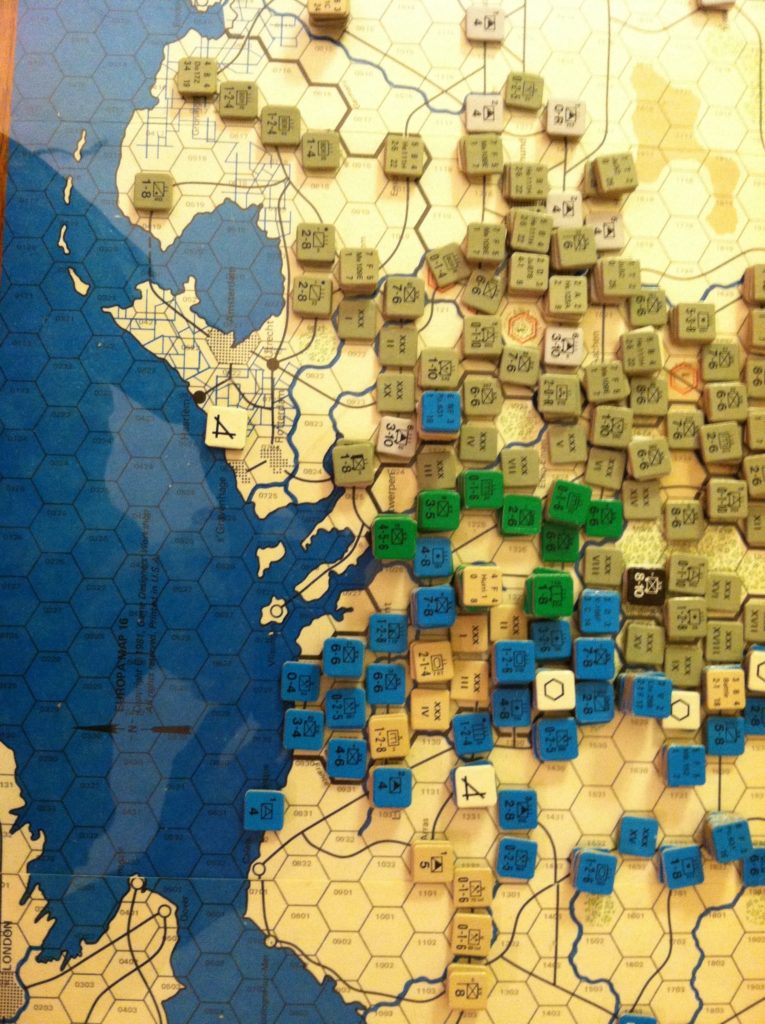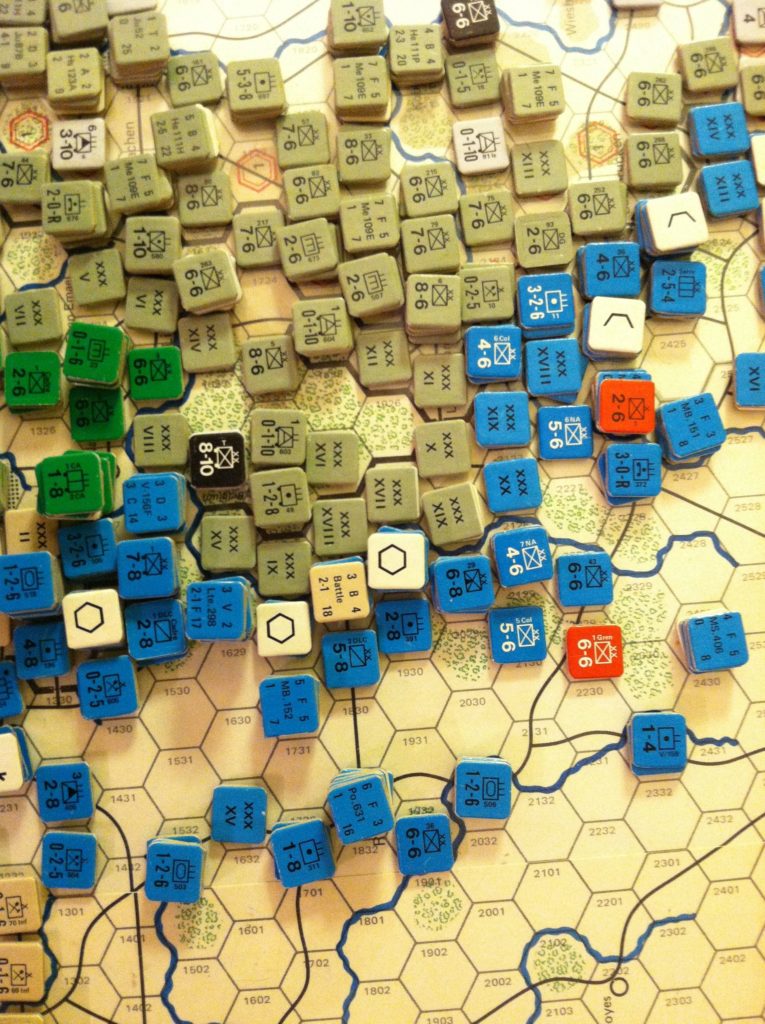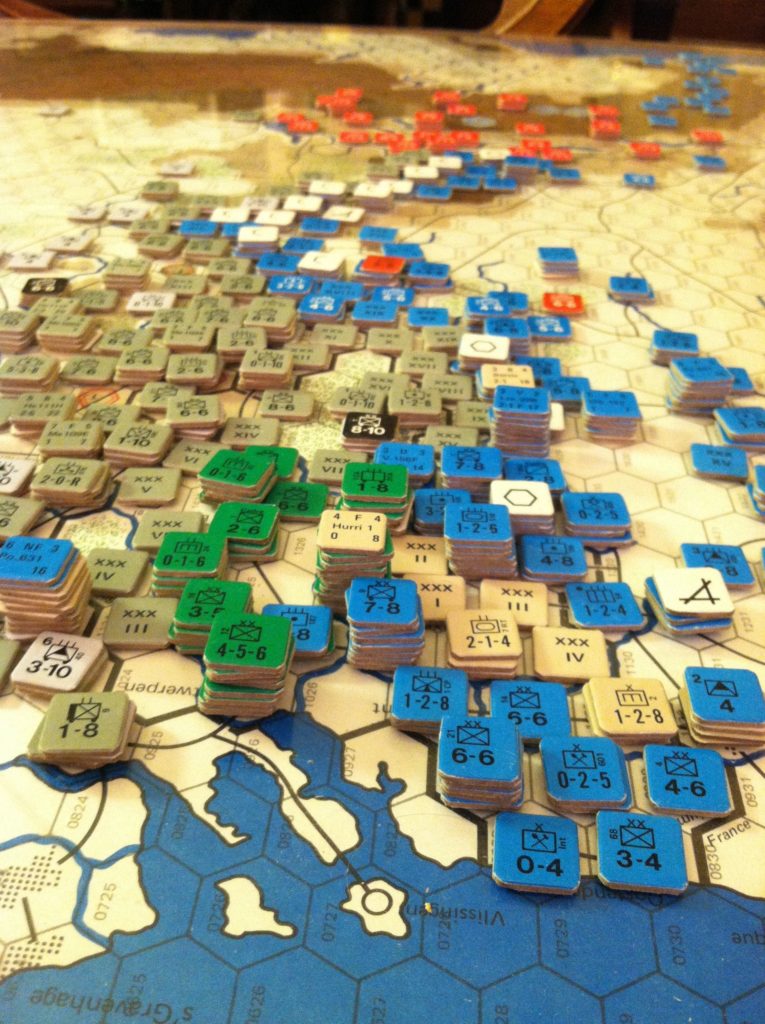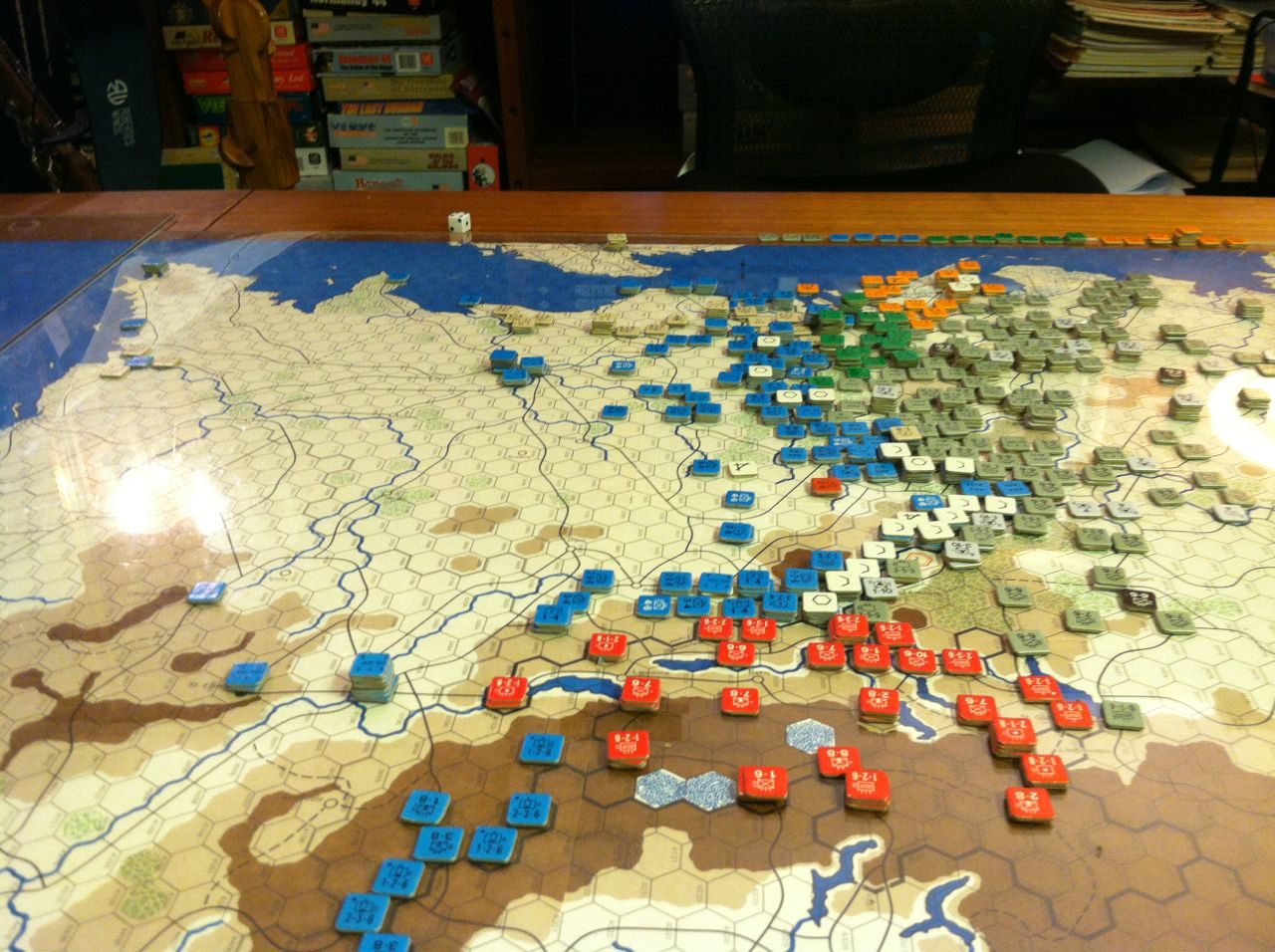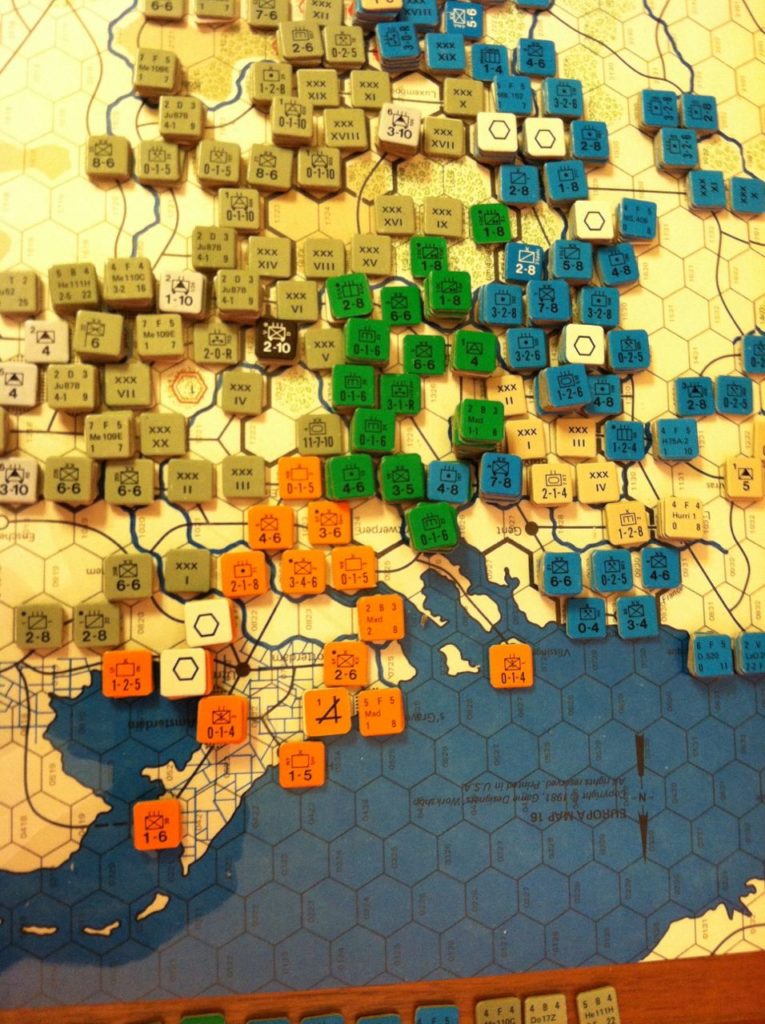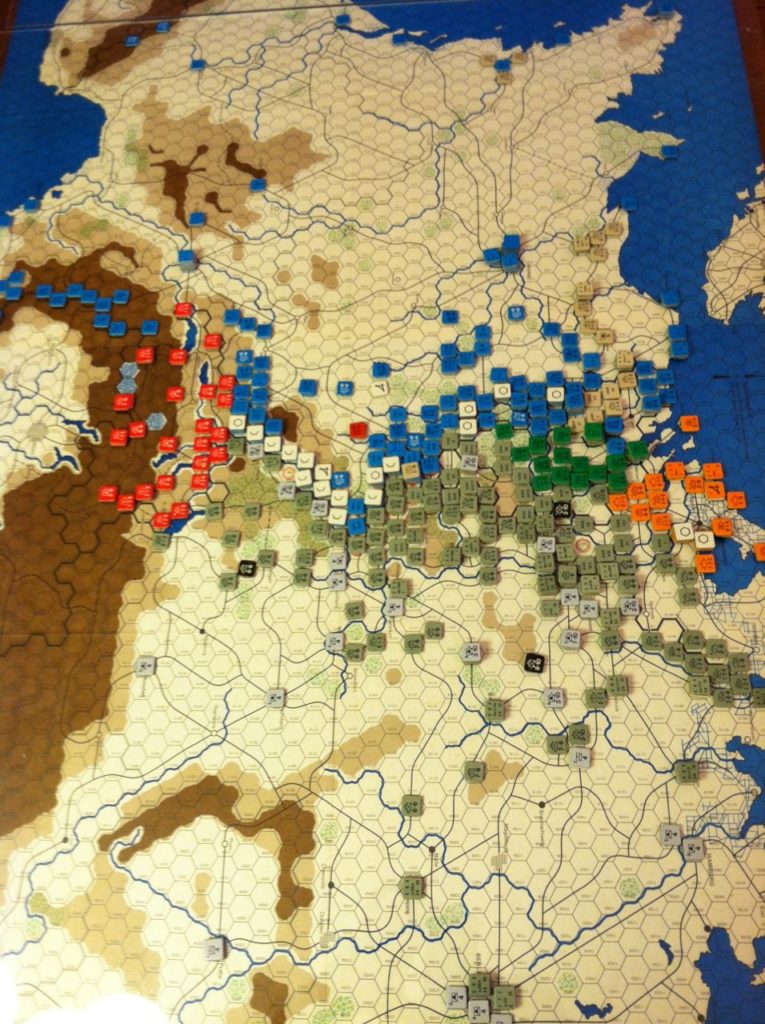The Axis use the lull to examine their options for the upcoming summer offensive. A number of options are considered:
A Northern Offensive – Primary Aim – to shorten the front and gain full Finish involvement in the East.
This offensive essentially aims to cut off Leningrad as far East as possible by driving North from the Kalinin bulge. In association with this will be a general drive north via the direct route pushing back the Soviet gains south of Leningrad. In the meantime maximum assistance will be given to Finland. This offensive gains little in Resource reduction (3 points for Leningrad but will dislocate the factory) or inflict massive manpower losses but it will considerably shorten the line allowing greater defensive concentrations for the future. The disadvantage of this plan is that there is tough terrain and the main German advantages of mobility and armoured strike power is minimised. Another factor in this plans favour is that the bulk of the Soviet army is far to the south.
A North/Central Offensive: Primary Aim: To take Moscow, Tula and Gorky and eliminate a significant part of the Soviet army in the process.
This is primarily an extension of the 1941 assault and aims to encircle Moscow. Again a drive from the Kalinin bulge but due East then curving south via Ivanavo to Gorky. A second pincer driving from Orel will drive behind Tula and north to meet the northern hook. This aims to maximise Russian losses and will reduce Soviet production by 7 points.
The advantage of this plan is the relatively small geographical area and the fact that the northern flank is screened by impenetrable terrain making a Soviet counter strike unlikely from this direction. The disadvantage is the vast Soviet assault army is to the south which will no doubt move to eliminate the southern pincer.
A South/Central Offensive: This offensives only aim is to eliminate the large body of Soviet Assault troops to the West of Voronezh. This would be a limited positioning offensive with one pincer driving south of Orel and one north from Kharkov. The aim to eliminate as many Soviet troops as possible, The advantage is that this is prime tank country with lots of rail lines for supply few natural defensive terrain features other than some minor river lines. The advantage is that the Soviets have no offensive concentrations to the south so this flank would be secure, conversely though the northern drive with its flank hard against Tula could suffer attacks from the north and Voronezh in the centre is well defended and fortified. This offensive gains one IRP reduction only.
A Southern Offensive This plan is for a strong mobile force to strike from Kharkov with two divergent thrusts. One aiming at Astrakhans via Stalingrad to secure the city and the flank of the main drive south to Rostov and the Caucuses. The advantage is that his offensive is against the weakest part of the Soviet line and the short hook to Rostov would pocket Stalino and the southernmost part of the soviet fortified line relatively easily. The main drive could capture or eliminate/disrupt 2 factories, the Baku production and 7 or more IRP centres.
The disadvantage of this plan is the vast amount of territory and the fact that the van guard will inevitably plunge out of supply. As with the central plan another disadvantage is the currently unemployed large Soviet assault army which lies to the immediate north which will harry and threaten the long exposed northern flank of this attack.
The Final Plan: Some combination plans are discussed such as a Central/South combination but this is discounted as too ambitious. After much debate Hitler and his General staff agree that Leningrad is to be the key. However there will be some variations and additions to the plan above. The Kalinin drive will strike east to capture the rail triangle with its apexes at Ivanovo, Kostroma and Vologda. This eliminates any help from the east and does not rely on the Finns capturing and holding the line south from Archangelsk north of Lake Ladoga. The single hex bridgehead over the northern Volga adjacent to the NE Moscow hex will try a direct assault to supplement this drive. The offensive will be made in association with a general push north in particular along the direct route from Veliki Luki aiming to reverse the Soviet gains south of Leningrad and taking advantage of the current dislocation caused by their own failed offensive. This drive will be infantry/artillery lead with some panzer support. Code name Operation Fleischwolf. (Meat grinder)
In order to mislead the Soviets as to the true intent of the summer offensive a second drive employing the panzers will be aimed at Rostov in the south. This is essentially the “small hook” part of the Southern Plan aiming to secure Rostov and the Don bend as a defensive line while capturing Stalino and eliminating the Soviet line south to the sea. This will launch some weeks ahead of the Northern push in the hopes of drawing the Soviet central army south. Code name Operation Angelhaken (Fish hook)
Pre-offensive moves. To prepare for the return of clear weather the central Axis forces will pursue the retreating Soviet army and keep in contact with it to reduce its mobility. This will however be an infantry pursuit allowing the mobile forces to move south to take up their pre-assault positions around Kharkov.
At Moscow infantry and defensive artillery will replace the panzers in the city while the panzers will occupy the important bridgehead east of the Volga adjacent to the NE Moscow hex. The west bank of the upper Volga north of the lakes will be cleared.
To minimise interference the Finns will be reinforced with a full strength Panzer division and tasked to sever the line south from Archangelsk.
North of Kalinin the rail line from the Valdai will be secured (and converted) and the infantry drive directly north reinforced to interdict or capture the East-West between Leningrad and Vologda.
To support the 1942 summer offensive plan the army boundary between AGN and AGC is moved south so that the whole northern pincer is under unified control. The new boundary is set at the centre of Moscow. Similarly AGCs control span moves to just north of Kharkov.
This turn:
Weather –No Change Snow in the Arctic zone, mud in B & C, clear elsewhere.
Finland & Army of Norway. A three hex assault against a key soviet fort south of Murmansk is successful allowing a Mtn division to advance and widen the route to Norway which had been constrained to a one hex wide corridor.
In the south the main assault is losing steam against a stiffening defence but manages to remove an infantry brigade from the northern flank of the advance.
AGN: AGN moves into offensive mode attempting to capitalize on the tentative encirclement of the Soviet spearhead south of Leningrad. 3 panzer divisions with support troops, mountain, light and infantry divisions launch a pincer move and succeed in trapping the two remaining Soviet assault stacks. A third attack in this sector eliminates a 3-6 infantry retreating east from the Soviets moves towards Riga.
North of Kalinin the German forces continue to roll up the soviet flank north of the Valdai and the German forces consolidate their hold on the East – West rail line easing the stretched supply line serving the thrust.

May I ’42: Heavy fighting along the shoulders of the Kalinin bulge
The Germans also begin the pre-offensive moves to clear the west banks of the upper Volga and start to replace infantry defenders with panzers in the eastern bridgehead over the canal adjacent to Moscow.
AGC: Around Orel/Tula the line thins as motorized assets are withdrawn to prepare for the summer offensive. Further south in the Kursk sector AGC pursues the retreating Soviet Ist Shock Army and eliminates 2.5 stacks of units in 3 assaults trapping another by infantry advances. Kursk is taken against light opposition as the soviet forces abandon their hard won gains of the last 3 months.
AGS: Preparations are made to prepare rail lines prior to the launch of the summer offensive and to receive mechanised assets transferring in from AGC.
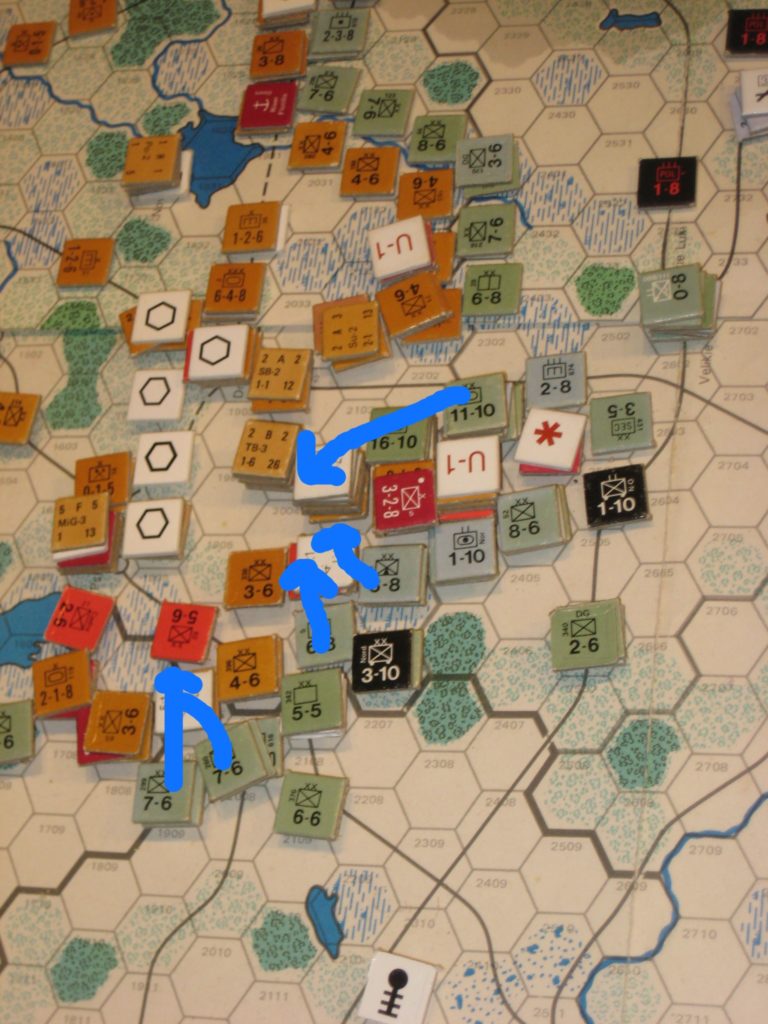
May I ’42: Local Attacks by the Axis in the Central Sector
11th Army & Odessa Rail conversion reaches the outskirts of the city and the German siege assault train (Literally because composed primarily of rail guns including a new supper massive gun) arrives and prepares to aid the demoralized Rumanians
Although low odds against some tank support the Axis strike at the Soviet defenders at the neck of the isthmus and obtain a HX result and advance into the neck.
Air War. In the north rail strikes obtain hits against two of the lines radiating from Leningrad to hinder reinforcements to the soviet front line.
Central units are also tasked with starting to break up the soviet rail net around the proposed breakout point in the south. (Just north of Kharkov.
In the south the appearance of the Black Sea fleet temps the Luftwaffe against all past experience to try and sink the two CAs ferrying supplies to Odessa. All attempts fail and the ship remain intact. However some compensation is given in the form of two downed soviet fighters from the Odessa defence squadron.
Long range fighters again try to eliminate the soviet Air Transports at Kerch but are beaten back by Soviet fighters and AA one German aircraft is eliminated.
Battle Report
Attacks: Diced = 11; Auto elim = 4
Losses: Soviets = 82 German = 5, Rum = 3
